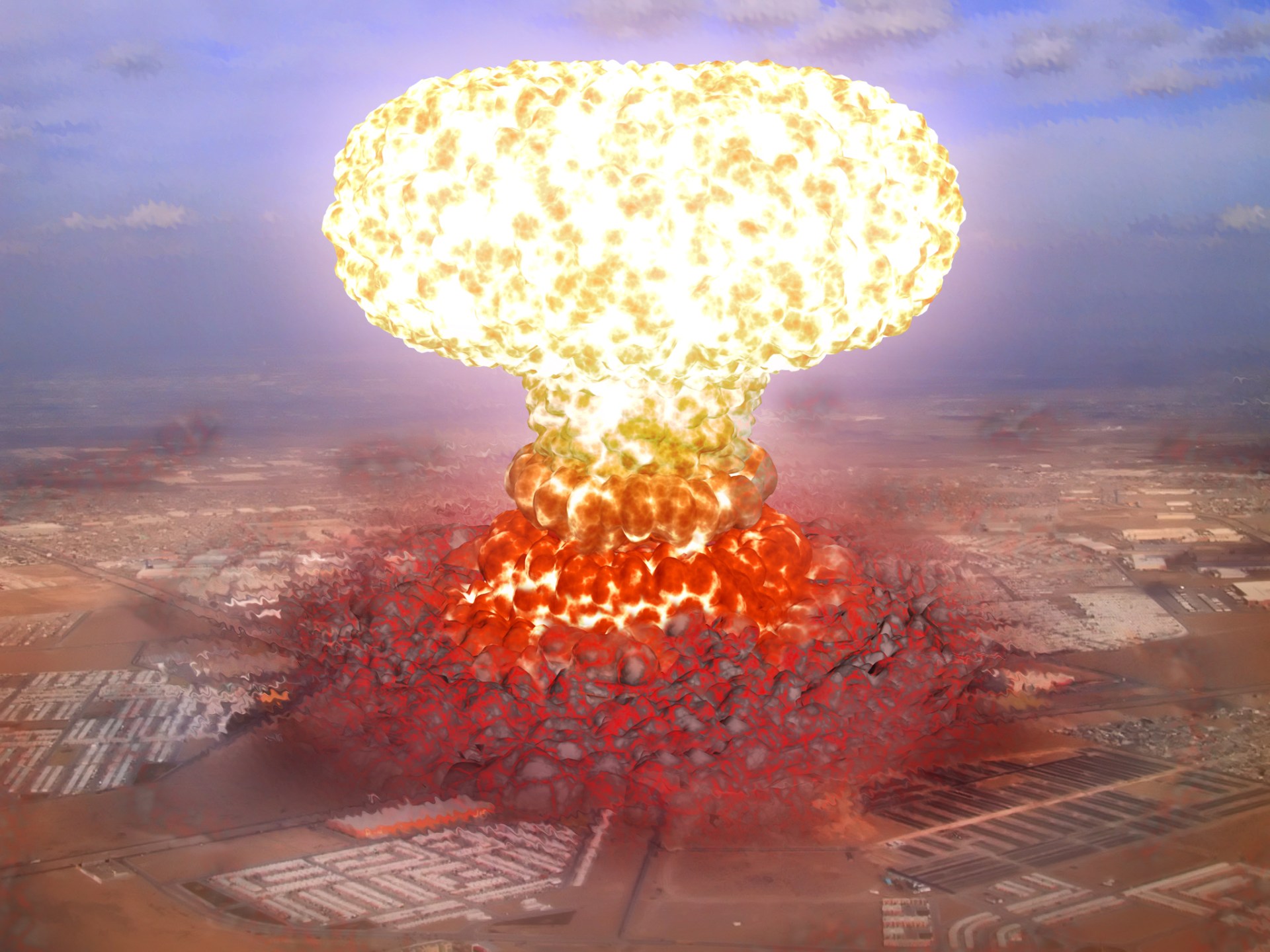With fear of nuclear war rising in 2022 to the highest levels since the Cold War, the global arsenal of nuclear weapons available for use by the armed forces of the nine nuclear nations has seen an alarming increase, according to the latest report by the Norwegian Nuclear Weapons Control Programme.
According to the Norwegian People's Aid monitoring program, the latest report released on Wednesday, March 29, indicated that at the beginning of 2023, the nine nuclear states had a joint stockpile of about 12512,512,2936 nuclear warheads, of which 9576,135 exceeded their useful life and are awaiting dismantling. The remaining <>,<> nuclear warheads are available for use by militaries and have a collective destructive power of more than <>,<> compared to the Hiroshima bomb.
Hans Christensen, director of the Nuclear Information Project at the Federation of American Scientists and a contributor to the Observatory for the Prohibition of Nuclear Weapons, said that every year the global stockpile of nuclear warheads decreases slightly, including in 2022 when it fell from 12,705 warheads at the beginning of the year to an estimated 12,512 warheads in January 2023, because Russia and the United States dismantle a number of warheads every year. Old nuclear that is decommissioned.
Size of the increase
Christensen added that the global total number of nuclear warheads available for use increased in 2022 by 136, and the countries that contributed to this increase are Russia, China, India, North Korea and Pakistan.
Great Ostern, editor of the Observatory for the Prohibition of Nuclear Weapons, said the increase was worrying, continuing the trend that began in 2017, and if not stopped, we would soon also see an increase in the total number of nuclear weapons in the world for the first time since the Cold War.
The Norwegian program report stated that the world's nine nuclear states all continue to fail to comply with their current obligations under Article VI of the Treaty on the Non-Proliferation of Nuclear Weapons (NPT) to "pursue negotiations in good faith" on nuclear disarmament.
Many States Violate Treaty Prohibitions
Thirty-five nuclear-armed States in the world, including the 35 so-called states under the protection of a nuclear state, had violated one or more of the prohibitions of the Treaty on the Prohibition of Nuclear Weapons last year, mainly by assisting and encouraging nuclear-armed States to continue to acquire weapons on their behalf.
He said Europe had the largest number of countries whose actions contravened the Treaty on the Prohibition of Nuclear Weapons and which voted against the treaty at the United Nations. Ostern said they perpetuate the idea that nuclear weapons are legitimate and necessary and a major obstacle to nuclear disarmament.
Acceleration of ratification and accession to the Treaty
However, the Ban Observer notes that the Treaty on the Prohibition of Nuclear Weapons gained strength in 2022, with the rate of ratification/accession by new States accelerated. As of today, 29 March 2023, there are 68 States parties to the Treaty and 27 have signed but not yet ratified it. This means that only 4 countries need to sign or join before the treaty reaches 50% of all countries.
Against the backdrop of Ukraine and Russia's regular hints about the possibility of using nuclear weapons, the embargo monitoring regime is more important than ever. According to Ostern, the Ukraine crisis has demonstrated that nuclear weapons do not create peace and stability, do not deter aggression, but reinforce conventional warfare and incentivize risks that could lead to nuclear war.

